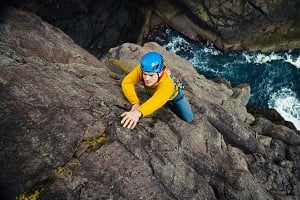
Whisper it – "Sport Climbing in Scotland!" - A subject rife with historical controversy, the country's 'dirty little secret'. Bolts chopped, replaced; guidelines made, stretched, redrawn...
Whilst not perhaps on the usual sport climbing circuit, Scotland is home to approximately 1400 single pitch sport routes of all levels of difficulty from French grade 2 to 9a. Sport climbing is found the length and breadth of the country, from somewhat urban locations in the lowlands to remote crags in the northern Highlands. Due to its complex geology and topography, Scotland offers a great variety of climbing styles on sea cliffs, mountain crags, quarries, and even man-made stone towers!
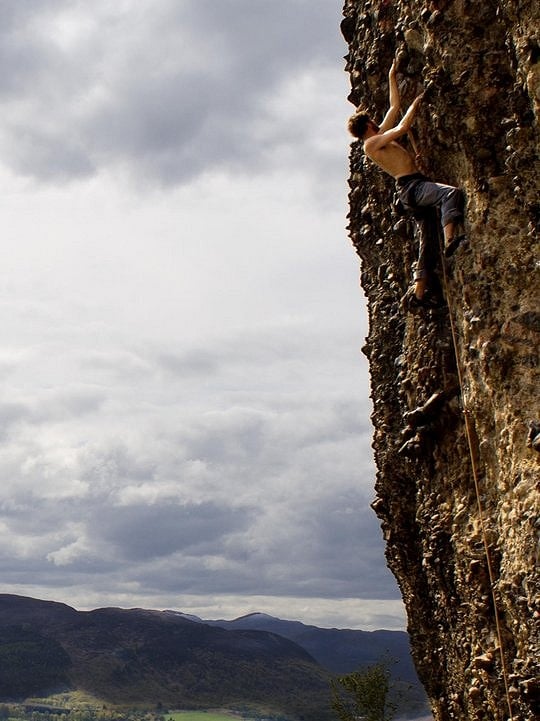
Scotland's remote and mountainous lands have instilled a strong custom of adventurous traditional and winter climbing; consequently the development of sport climbing was unsurprisingly often controversial. In the mid-1980s however, a select few visionaries saw space for this continental climbing style. In Angus, N. Shepherd and friends began drilling at Legaston quarry. The bolts here were removed and replaced on numerous occasions before sport was to have its place and emerge from the undergrowth. With the exception of classics at Dunkeld's Cave crag, developments in the late 1980s largely remained at Balmashanner and North Berwick quarries.
The 1990s saw a big surge in the development of sport, which not only appeared beside traditional routes, but also on the sea cliffs of Arbroath and later controversially at Boltsheugh. From The Central belt to Glencoe, many sport crags were developed including, Weem, Creag a Bhancair, Strathyre, Dunglas, Steall Hut Crag, and Glen Ogle, where over 200 routes were put up, typically from the mid-grades and up. The end of the decade saw the delights of northern conglomerate realised at the Camel. The momentum in developments was to continue.
The new millennium saw continued bolting that was to finally reach the northern Highlands. The beginning of a change was the development of many easy routes at Bennybeg...sport for all had quietly arrived. In the far North West, Paul Tattersall and friends opened what are now the classic gneiss outcrops of Creag nan Luch and the Gruinard crags. Amazingly, Angus was still a centre of activity where the now popular crags of Rob's Reed and Kirriemuir were bolted in the latter part of the millennium.
The latest developments have largely been in the north, particularly on the conglomerates of Moy, and Loch Fleet. Being gneiss, the recently developed Brin rock is bound to be popular but its development still debated by some. The initial Scottish sport routes were created in largely due to the efforts of just a handful of developers, their legacy a plethora of routes to suit all styles and abilities.
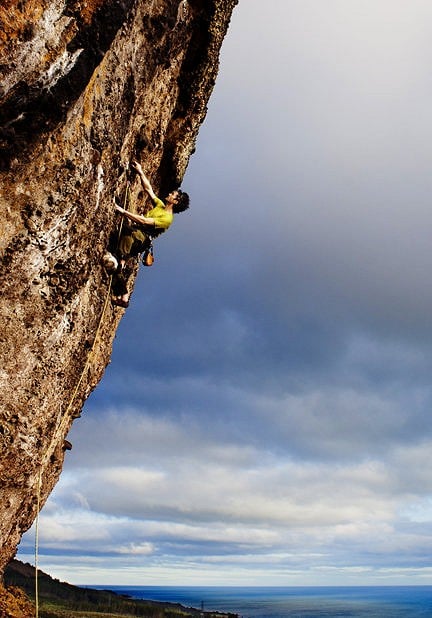
The Areas
North-Eastern Conglomerate
A distinctive feature of the north east highlands, as well as a scattering of more southerly crags, is conglomerate outcrops formed of a sandstone matrix interspersed polished pebbles. Familiar to anyone who has visited Riglos or Montserrat, this is perhaps the closest Scotland gets to continental-style sport climbing. Open faces covered in pebbles and cobbles, or the pockets left by their departure lend themselves perfectly to sustained and technical routes. An added bonus for fans of pebble pulling is that most of the longest sport pitches in the country are to be found on conglomerate.
Rob's Reed is the most southerly location to sample this rock type, easily accessible from Dundee and the southern cities and home to 45 routes up to 7c. The best are the harder lines, especially the test-pieces emerging from Dirty Harry's Cave, Car Pit Baggers (7a+) and Climb and Punishment (7b). Further north, close to Inverness, lie s the home of conglomerate sport, including the stunning Creag nan Clag (a.k.a. The Camel). While this crag only holds 10 routes, 5 of them are 3 star, including Stone of Destiny (6c+), Paralysis by Analysis (7a+) and The Gift Link (8a+). Nearby, Moy Rock has become the most popular sport venue in the highlands, due to a broad grade spread and a flurry of development that followed the felling of the forestry plantation that previously cursed it with midges and damp. It now holds over 40 routes across 9 buttresses, with more being equipped as we write. The best face climbing is to be found on the central Teaser Wall, including Little Tease (6b+) and The Ticks Ate All the Midges (7a).
Further north still, the area surrounding Loch Fleet holds a cluster of good quality conglomerate to reward those that make the journey, often with beautiful outlooks over the sea, and south as far as the Cairngorms. Creag Bheag (the Mound) holds the greatest concentration of routes including the fun Jailbird (6b), and is popular with beginners, while the higher altitude Silver Rock holds some savage Simon Nadin test-pieces such as Champ at the Bit (7a+). The recently developed Creag an Amalaidh is well worth the walk-in, with routes ranging from slabby face climbing (Sleekit 6b) to steep roof swings (Badass Honey Badger 6c+)
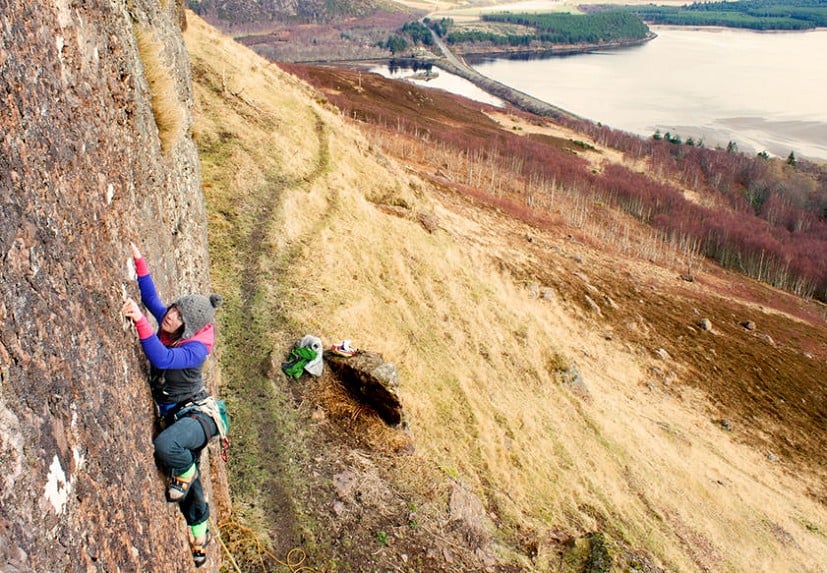
North-West Highland Gneiss
The area south of Ullapool and around Gairloch sports outcrops of the oldest and arguably best rock in the country. Gneiss is metamorphic compressed limestone, hard as nails but with excellent friction. Close to the infamous Gruinard Island, Goat Crag is perhaps uncharacteristically steep for Gneiss, which lends itself more to vertical and slabby faces. One such steep, pumpy line is the classic Mactalla (7a+), one of the finest pitches of its grade in the country. If that didn't destroy your arms, a short walk further right along the hillside brings you to Am Fasgadh, which is populated exclusively with harder lines including the trio of 3-star 7c's : Black Sox, Tog Balla and Primo. A little further south lies Creag nan Luch with 29 routes from 5-7c+. The lower tier is popular and holds the excellent bulging slab of Psychopomp (6b) and the beautiful curving crackline of Superblue (7b). The upper tier is less travelled but holds some spectacularly positioned lines such as the well-named King of the Swingers (7a). Further south again lies Creag nan Cadhag, a recently developed crag with a beautifully wild aspect, despite being easily accessible from the road. The rock is interestingly featured and even sports the occasional crackline. The best of the bunch there is Axe Grinder (7a) which takes the centre of the cleanest face of the crag, but the steep leaning wall to its left still holds unfinished projects that might yet displace it as crag classic.
Geographically isolated from its peers, Brin Rock is found in a small gneiss area south of Inverness and close to Creag nan Clag. There has been a flurry of development there recently, adding to the existing classics of Pink Wall (7b) and The One and Only (7a+) with some intimidatingly long lines to the right, including Vasigil Overdose (7a+)
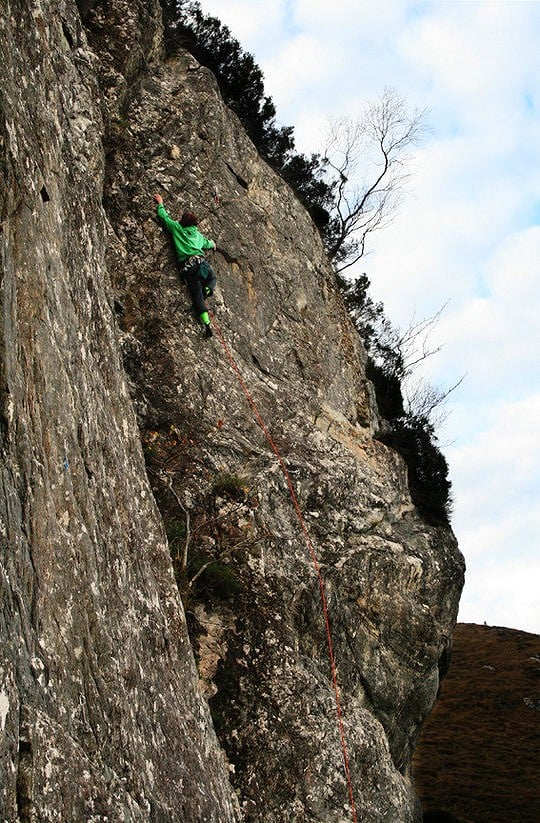
Central Highlands
Some of the earliest developments in Scottish sport were on the central highland schist, complex folded metamorphic rock with a perplexing variety of pockets and slopers that makes it notoriously hard to on-sight. The more well-known areas are to be found in the central glens, close to the A9. Upper Cave Crag at Dunkeld holds perhaps the most sought-after sport routes in the country: Marlene (7c) Hamish Teddy's Excellent Adventure (7b+) and Silk Purse (7c+), which have the added bonus of being climbable in the rain. Nearby Weem is unusual for Schist in that it relies more on edges than pockets and also holds some fine technical slabs. The Long Good Friday (6c+) is surprisingly strenuous for its angle. Less surprising is the pump produced by the steep crag classics The Screaming Weem (7a+) and High Pitched Scream (7a). The Southern Highlands also host two more remote crags with a somewhat mountainous feel. Rockdust, near Pitlochry and Dunira, west of Crieff are worth the walk-in for their scenic outlook and guaranteed solitude. While the climbing is generally on immaculate compact schist, Rockdust does have a few loose rocks near the top, so pack your helmet. In contrast, the dolerite escarpment of Bennybeg is perhaps the most accessible sport crag in the country (it even has a café!) and is very popular with beginners and groups, being well equipped and holding a good selection of routes below 6a
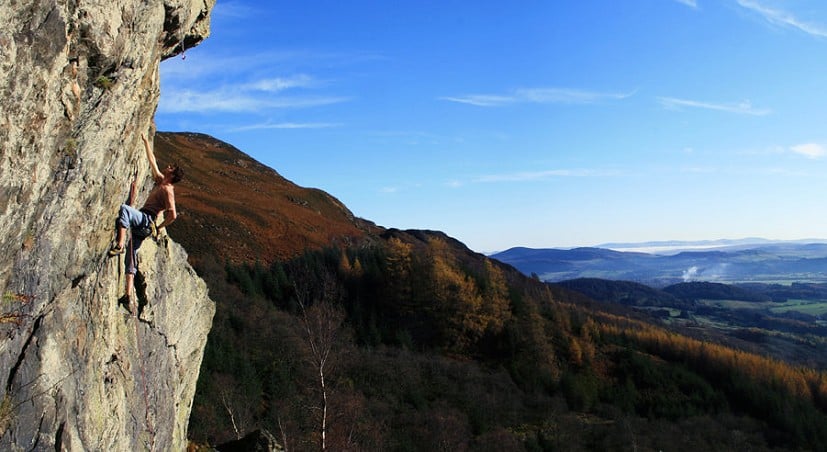
Glen Ogle was at one time the epicentre of sport in the country, boasting 140 lines across 18 schist crags on both the sunny and dark sides of the Glen. The routes tend to be short and hard for the grade, and the area has partly fallen into obscurity. If you do visit, choose your crag wisely as in summer bracken will make the approaches challenging, and be circumspect for aging bolts. The best lines are to be found on the more remote crags, away from the noise of the road, including Cony the Calvanist (6c+) on the Mirror, high on the sunny side. On the dark side, the high Bond Crag holds the excellent Boldfinger (7a) , the steep pale prow of the Concave Wall offers the test piece Tosser Velocity (7b+), while the more accessible Cascade Wall may be slow to dry, but is popular for Short Sharp Shocked (6a+).
Further west, near Loch Lomond there are a profusion of small schist outcrops, many of which are yet to be developed. The faces and giant boulders of Stronachlachlar are in a beautiful location; just don't get lost trying to find the G-spot, for the surrounding forest eats the unwary! On the shores of Loch Lomond itself, Crystal Crag holds an unusual quartz patina providing a range of thin edges, and catches the afternoon sun nicely. Colin Miln's Age of Aquarius (7a+) and Fear and Loathing (7b) are the best lines there. On the opposite shore, Ardvorlich may be small and the grades more modest but the sparingly bolted routes still require focus, such as Snake Eyes (6a) and Magic Carpet Ride (6b). A little further north, the schist of Glen Nevis is generally amenable to trad protection, but the exception to this is the glacier polished Steall Hut Crag, home to some newsworthy sport developments recently with the completion of Dave Cuthberson's long standing project Ring of Steall (8c+) by Dave Macleod, amongst a half-dozen other 3-star hard routes, including the vaunted Stolen (8b).
The mountains of Glencoe hold a different geology, and amongst the world-class trad climbing there lies a surprising pocket of high quality hard sport climbing. Creag A'Bhancair, an eye catching rhyolite face low on Buachaille Etive Mor, was the site of some heated controversy in the 1990s when the existing hard, bold trad routes were retro-bolted. This debatable action produced routes regarded by some as amongst the best in the country, including the classic Fated Path (7c+) and Railway Children (7c).
Eastern Sandstone and Seacliffs
The very first sport routes in Scotland were founded in the sandstone quarries of Angus, near Dundee, and remain popular training grounds for climbers in that area. While often not the aesthetic experience that is offered in the highlands, the hard sandstone favours small edges and long moves between horizontal breaks, making for some notoriously difficult routes. While Legaston may not be as deep as it once was, it still holds one of the countries earliest sport routes: Driller Killer (6c) is technical, crimpy and reachy in equal measures and remains a tough test-piece. On the fine clean wall of Forbidden Buttress, the more modern classic Spandex Ballet (7a+) is to be found. For something steeper, head to Balmashanner, who's fiercely overhanging main wall holds Savage Amusement (7b) and the cruel slopers of The Merchant of Menace (8b). Ley Quarry may appear at first to be a bit of a manky hole in the ground, but it is a sheltered sun-trap and climbing routes such as Nirvana (7a+) from the terrace over the pond can prove to be a surprisingly pleasant location! Just bring your strongest fingers! One of the most popular areas for sport in the country is Kirriemuir - an open quarried escarpment of well-equipped sandstone / conglomerate with convenient access and a good spread of amenable grades. It currently boasts 74 routes from 3 to 7a+, often weaving through stepped overlaps and hanging slabs. Perhaps the best there is Bon the Edge (6b+) which starts up an enjoyable arête, before a surprisingly tricky crux passing a small roof.
And then, for the more adventurous, there is Arbroath. Unusual in the sport genre in that it has very few lower-offs, it relies instead on topping-out and bringing up your second in a very traditional style. The rock is coarse, sea-washed sandstone, producing slopers, rounded ribs and bands of pebbles. Just being able to pull hard will not get you up many of these routes, and good technique and footwork will pay dividends. The coastline is complex and just exploring the many coves and inlets that conceal the 120 routes is very atmospheric. For the beginners there is Sector Cartoon, an easily approached platform with short routes from 3 to 6a. Further north, and relying on abseil access, the Conning Tower inlet contains contrasting classics in the corner of Silence of the Clams (5+), the arête of Swindler's List (6a+) and the steep crack of the Mystic (6c+). One of the most intimidating areas must be the Doom Hole, where routes such as The Siren (6c) edge out over a huge natural blowhole arch. And finally, at the north end of the area, lies Scotland's only bolted sea stack! The Deil's Heid route (5+) was originally a sparingly pegged HVS and still provides a memorable adventure!
Two geological oddities are also within easy reach of Aberdeen, making a welcome change from the sandstone. The Elephant, on the coast near Montrose, is a weird tooth-like outcropping of volcanic rock. Pierced by tunnel caves that produce its zoomorphic name, the rock is highly featured and provides memorable climbs up faces, such as Tale of the Tape (6a+) and steep overhangs, including the monster groove of Hanger 18 (7a). To the north, close to the Pass of Ballater, the quarries of Cambus'O'May provide the only granite sport climbing In the country, including Neil Morrison's classic Sun City (7a+) .
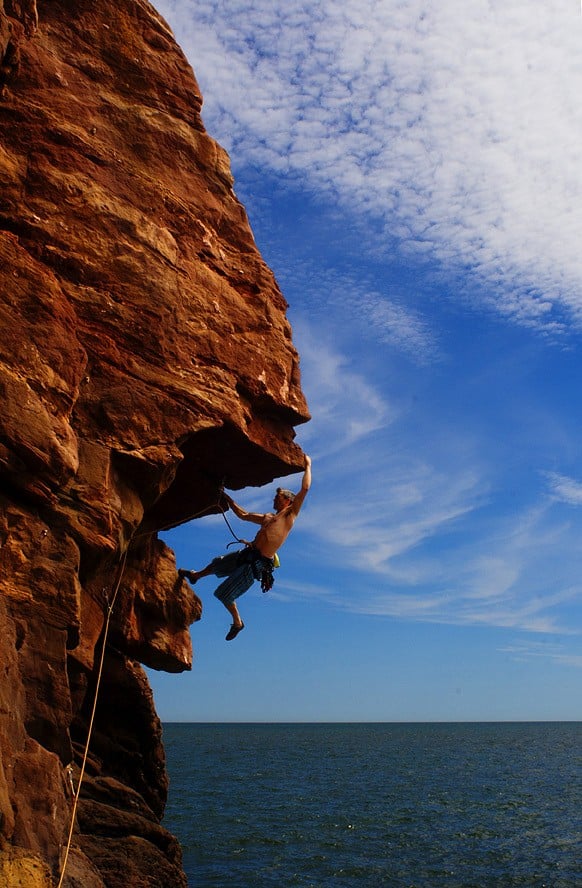
Lowlands Esoterica
Despite being close to the two main centres of population, the Scottish Lowlands are not overly endowed with sport climbing venues. The local tradition in the dolerite quarries is for somewhat bold trad climbing, and the sea-cliffs tend to be adventurous. So those not wishing to make the journey north for bolt-clipping fun may need to seek out more esoteric locations. The sunny, quarried bay at North Berwick Law is popular with Edinburgh residents, and is an easy train ride from town. Routes range from the slopey steps of Wild Iris (5+) to the immaculate wall climbing of Law Of Gravity (7a+) and the popular slab route Old Lawbreaker (6b). Glasgow's equivalent would be Dunglas, a short leaning wall of basalt near Strathblane. The face is packed with lines (12 routes on 4 loweroffs!) and it is common to make one's own link-ups and eliminates once the main routes have been ticked. The best and original route here is The Beef Monster (6c+), although the rising girdle traverse of The Ring Cycle (7b) is recommended for a quiet day. Also conveniently close to Glasgow, Dumbarton Rock is perhaps best known for its hard-core basalt bouldering, and Dave MacLeod's E11 route 'Rhapsody'. There are also a handful of good sport lines requiring good and sometimes unusual technique. On the steep slab below the Rhapsody face there is 'Persistence of Vision' (7a+), while the black overhang to its right sports some fiercely crimpy routes including the well named Sufferance (8a), and round the seaward side to the right there are seven routes at 6c+ to 7c. Nearby Dumbuck is a short but 45° overhanging basalt wall, almost entirely populated with >7c+ routes such as Awaken (7c+) and Dave Macleod's Devastation Generation (8c) which was the hardest sport route in the country at the time. For the true Lowland Esoterica experience, however, head to Blantyre Towers, where several of the old railway viaduct towers have been bolted to create a unique climbing experience on faces and arêtes that is more enjoyable than you might expect! Most of the routes are in the mid 6's but the best is Ivy League (7b).
Logistics
When to Go
Two factors must be taken into consideration when planning a trip to climb anywhere in Scotland : the weather and the dreaded highland Midge. Scotland's prevailing weather systems come from the southwest, bringing moist maritime air from the Atlantic. When this is lifted by the mountains, it falls as rain or snow, producing a much wetter climate in the western mountains than in the lower east, which lies largely in their rain-shadow. The driest and sunniest months are April-July. Winter can produce some stunning dry cold weather amongst the snow, but remember that the northerly latitude makes for very short days in the middle of winter. Midge season runs from April-October, getting more voracious toward the end of the season, often making April and May the most pleasant time to be in the mountains. Any breeze should keep midges at bay, as will bright sunshine, but contrary to popular belief, they can be found at any altitude from sea level to the highest summits.
Accommodation Advertise here
No Premier Listings found in this area
While a detailed lowdown of all the best camping spots in the country is beyond the scope of this article, Scotland's right to roam legislation means that camping is acceptable in all wild areas, so long as livestock, fence-lines and the privacy of residents are respected. There are particularly good spots close to the West Highland crags, especially around Gruinard Bay. For a little more affordable comfort, there is a wide network of YHA youth hostels as well as independents, such as the unique hostel formed of several old first-class railway carriages at Rogart Station.
Getting Around
Scotland is well served by rail and bus services, so many crags can be visited without a car, especially if you take your bike on the train (which is free). The exception to this is the west highlands, where train lines are scarce, and while there are local bus services, they are infrequent. Here a car becomes a much more useful option, especially if camping. Remember though, that the west highlands often observe the Sabbath, and so most shops (and petrol stations) are closed on Sunday. Take a spare can just in case.
Gear Shops and Guidebooks
Scotland is fairly well supplied with climbing gear suppliers in the larger towns and cities, with a few smaller shops in outlying areas. Edinburgh and Glasgow have Tiso's, as well as the usual range of national retailers. Fort William has the original Nevis Sport, and is generally well geared up for outdoor sports. Nearby, the Ice Factor in Kinlochleven has its own gear shop. For the Northern Highlands, either stop off in Inverness (MacPherson Mountaineering) or head west to Ullapool (NorthWest Outdoors). Central and Southern highland areas are supplied by Mountain Leisure in Perth, Munro's in Pitlochry, And the North East by Craigdon Mountain Sports.
The described venues, many of which have never before been published in a guide book, are largely covered by the new 7a Max Scottish Sport selected guide. An SMC sport guide for Scotland is said to be in pipeline, possibly appearing next year. There are some scattered mentions in the older SMC trad guides for the respective areas and Garry Latter's more recent two-part guide to Scottish Rock contains a selection of some venues.
Outdoor Shops Advertise here
No Premier Listings found in this area
Instructor/Guides Advertise here
No Premier Listings found in this area
Climbing Walls Advertise here
No Premier Listings found in this area
About the Authors
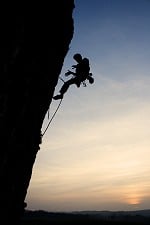
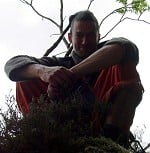

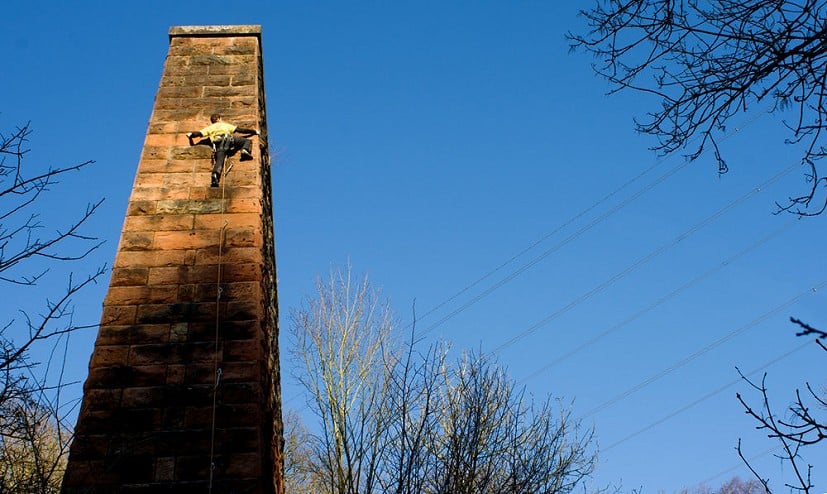
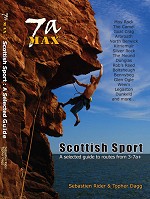
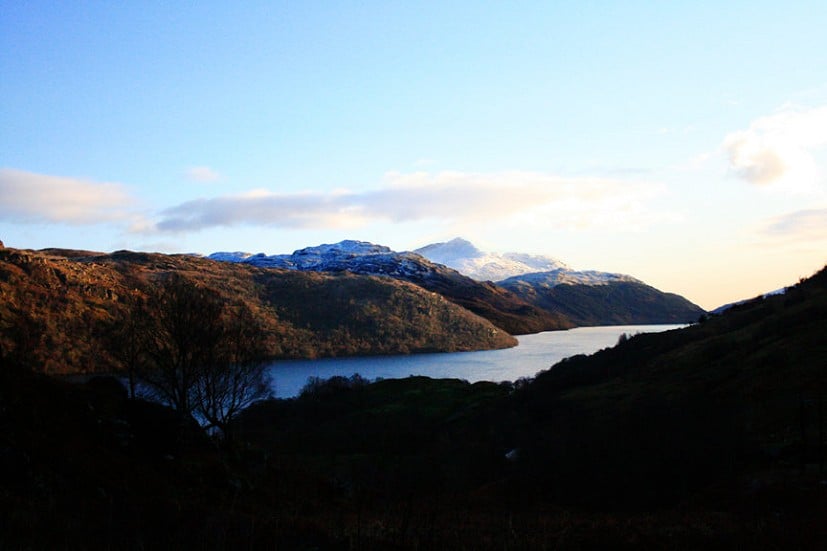
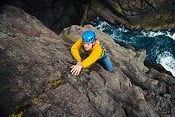
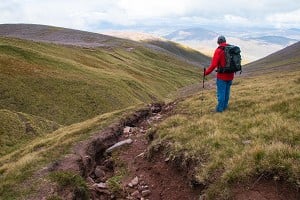
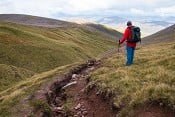
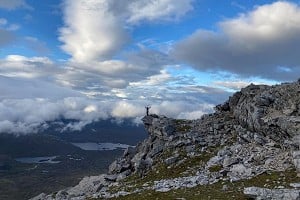
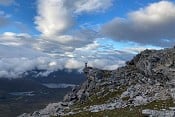



Comments